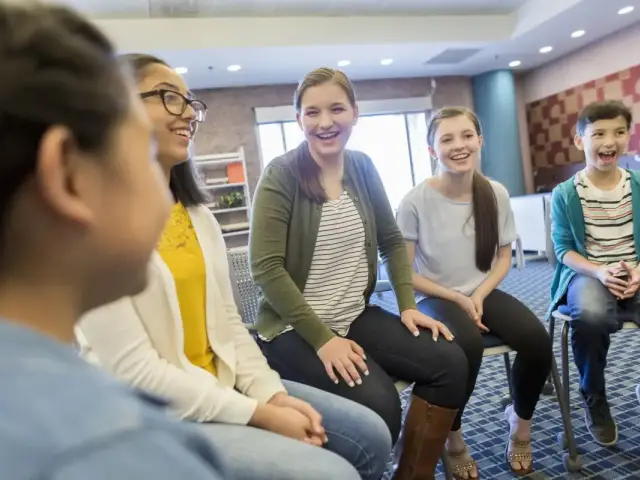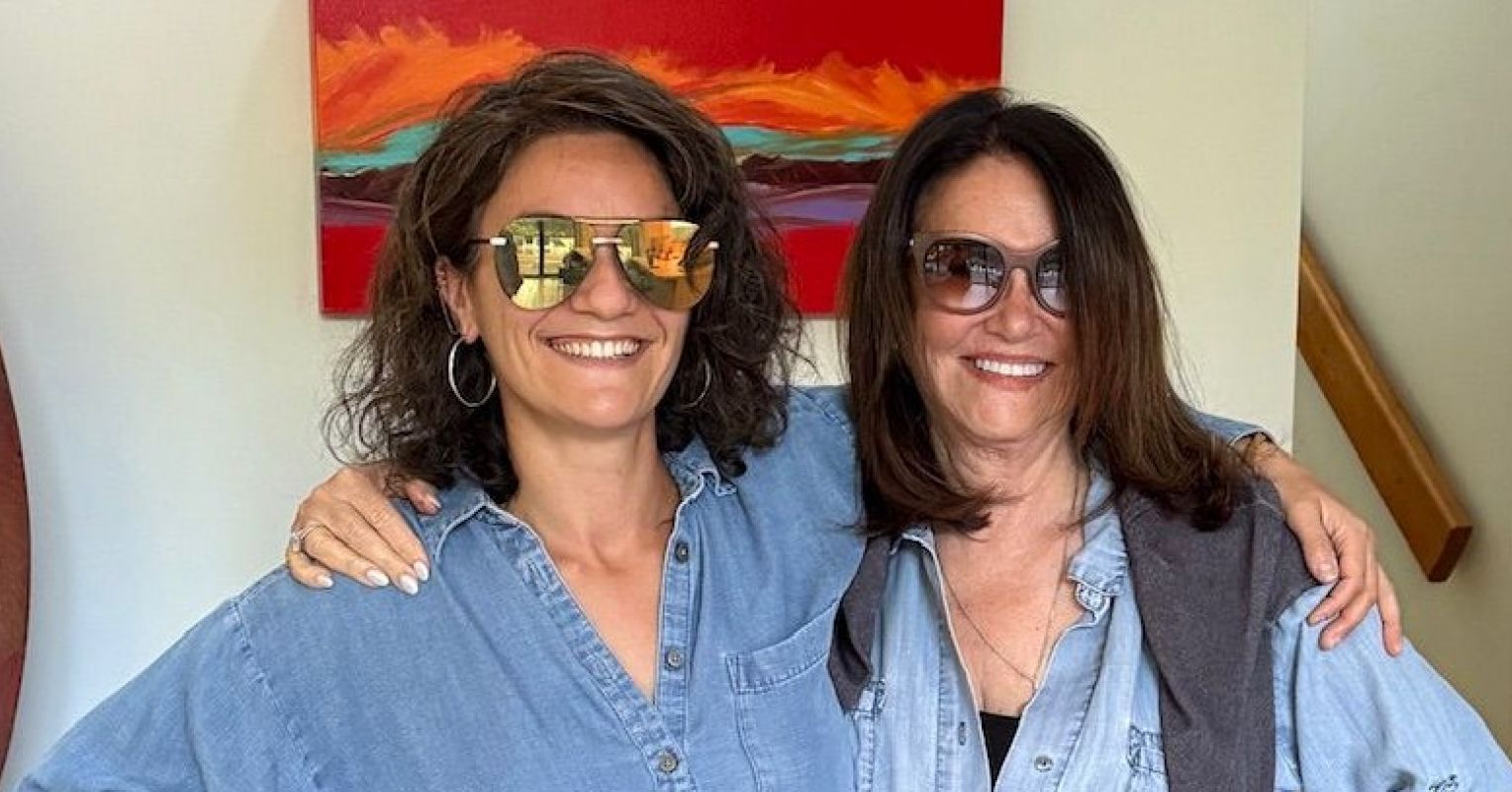In today’s polarized educational climate, many educators feel caught in a bind: They want to support lesbian, gay, bisexual, transgender, and queer (LGBTQ) students and foster inclusivity but fear pushback for engaging with topics some consider “controversial.”
Yet what if we’re already holding the tools to bridge this divide—tools that are evidence-based, developmentally appropriate, and already widely embraced in schools?
Social-emotional learning (SEL) equips children with empathy, Self-awareness, and the ability to navigate difference with compassion. When used intentionally, SEL can be a powerful, non-divisive path toward cultivating LGBTQ allyship—starting in the earliest years of a child’s development.
Why SEL and LGBTQ inclusion go hand in hand
X

For six years, I taught SEL in classrooms and community spaces across Los Angeles County. My students ranged from elementary school children to incarcerated youth at Los Angeles Central Juvenile Hall. I also led SEL workshops for LGBTQ youth shelters, after-school programs, and organizations like Big Brothers Big Sisters and Penny Lane Centers.
This work, often in under-resourced communities, taught me that SEL is not just curriculum—it’s connection.
SEL is built on five core competencies: Self-awareness, self-management, social awareness, relationship skills, and responsible decision making. Each of these can directly support inclusive behaviors:
- Self-awareness allows students to reflect on their own biases and beliefs.
- Self-management helps students regulate emotions, manage stress, and align their behavior with their values.
- Social awareness helps them understand and respect others’ identities and experiences.
- Relationship skills teach communication and conflict resolution, essential for healthy cross-identity relationships.
- Responsible decision making promotes ethical thinking—helping students make choices that support equity and respect.
Studies have found that students with higher SEL competencies are less likely to engage in bullying and more likely to act as upstanders when their peers are mistreated. According to GLSEN’s national school climate survey, schools with inclusive curriculum and supportive staff report significantly lower rates of harassment toward LGBTQ students. SEL provides a framework to make this possible—not by talking about LGBTQ matters in isolation, but by incorporating allyship into the emotional and social fabric of the classroom.
One lesson I learned early on: Young people need spaces where they can be authentic, feel truly heard, and explore identity without fear or judgment. One of the reasons I began teaching SEL at Los Angeles Central Juvenile Hall is that LGBTQ youth often faced immense bullying and discrimination, requiring them to be housed separately from the general population to prevent serious harm. Incorporating SEL concepts helped both LGBTQ youth and their peers have conversations they wouldn’t normally have felt comfortable having—about identity, self-esteem, bullying, empathy, and the impact of their experiences. I remember many classes where we addressed body image, gender roles and expectations, discrimination, and other topics that encouraged compassion toward gender and sexual minorities.
This experience showed me that SEL has the potential to challenge internalized bias, open doors to empathy, and nurture allyship—even in the most unlikely places.
The impact of silence—and the power of language
Part of what drives my work is a very personal experience. Years ago, my six-year-old nephew, Aaron, asked me a simple question: “Uncle Chris, is she your girlfriend?” I remember turning bright red and feeling a pit in my stomach. I was surprised by his question and remember looking around for reassurance in the faces of my family.
I wasn’t prepared for that moment—not because I was ashamed of being gay, but because I didn’t have the language, or the practice, for talking about my identity with a child. I also assumed that his parents had already started having conversations with him about gender and sexual differences.
That moment changed the trajectory of my life. It became the foundation of a letter to my family, which turned into a widely published article, then a TEDx talk, and eventually my book, Raising LGBTQ Allies: A Parent’s Guide to Changing the Messages from the Playground. It’s what motivated me to bring SEL curriculum to classrooms across Los Angeles County.
My nephew’s question reminded me that silence is also a message. Silence, especially with regard to identity, is loud and often deafening. When we withhold from young people the experiences of entire groups of people, we send a powerful statement.
When adults avoid talking about identity differences, children learn that those topics are off-limits—or, worse, shameful. SEL gives us tools for speaking honestly and age-appropriately about difference, so children don’t internalize fear or stigma.
Sometimes, we think we choose to avoid having certain conversations because children are too young. If we’re honest with ourselves, it’s typically because of our own discomfort. And children are truth detectors—they sense fear. Choosing not to share something with a child because we don’t think it’s necessary versus avoiding the conversation because of fear, shame, bias, or privilege are two distinctly different reasons.
Raising children to understand differences rather than to see LGBTQ youth as different is a much more unifying approach. There’s a fine line between awareness and hypervigilance, and this isn’t about making youth hypervigilant about differences; it’s about instilling in them a sense of awareness and helping all kids feel affirmed for who they are.
What educators and parents can do
One of the classes I taught was called Who Am I. Students participated in an exercise where we asked them to tell us what they believed about things like boys, girls, school, life, family, money, and so on. The purpose of the exercise was to uncover negative beliefs and replace them with something positive. It was one of my favorite classes because it was all about helping young people bring awareness to their beliefs and values. For example, after completing the exercises in the Who Am I class, we invited the youth to see if the results matched what they learned or heard growing up and then ask themselves these questions:
Does this support what I personally believe? Is this true 100% of the time?
For example, one summer, I taught a Who Am I class to a group of fourth graders—the youngest group I’d ever explored belief systems with. After a journaling exercise, I asked them to share a belief they had about money. A nine-year-old boy shot his hand up and declared, “Money is the root of all evil!”
I was surprised by the strength of his conviction and asked whether that belief was truly his or something he had heard. “It’s my belief!” he insisted. But when I asked if he had a job or received an allowance, he said no. So I gently asked, “Then how did you learn money was the root of all evil?” He replied, “It’s something my mom says a lot.”
That’s the thing about beliefs: Most of them aren’t originally ours. As children, we absorb them from the adults around us. This moment gave the class an opportunity to reflect: Does this belief support what I personally believe? Is it true 100% of the time?
I asked the group if they wanted a car someday. “Yes!” they all shouted. A house? A pet? Things they enjoy? “Yeeeeesss, Mr. Chris!”
I explained how having a negative subconscious belief—whether about money or something deeper, like being LGBTQ—can create inner conflict. Even if we consciously value something, we might still push it away without realizing it, simply because we were taught to.
This type of reflective practice supports the development of critical consciousness—a skill that helps students challenge bias, question dominant narratives, and build a deeper sense of Self-awareness, which research suggests can lead to more inclusive and ethical decision making.
Another time, I worked with a group of middle schoolers who wanted to create a skit about challenging gender roles and expectations. A group of girls shared that they all played on the same girls’ basketball team and had noticed how their dads would regularly attend their brothers’ games, but not theirs. They decided to create a scene where a girl bravely asked her father why he didn’t come to her games and expressed how it made her feel. That simple script came from their own words, their own understanding. SEL had given them the language—and the courage—to express it.
Here are some specific ways to integrate LGBTQ inclusion through SEL:
1. Use inclusive language. Model terms like “partner,” “parent,” “scholars,” or “friends” instead of assuming gender roles or using binary language like “boys and girls.” Normalize a variety of family structures and ways of referring to students. Small shifts in language like these signal safety, inclusion, and belonging to LGBTQ students and their peers.
2. Choose representation wisely. Use stories, books, and classroom materials that reflect diverse identities, including LGBTQ characters and families. Resources like Red: A Crayon’s Story by Michael Hall or Julian Is a Mermaid by Jessica Love are wonderful starting points.
3. Teach empathy with real-life scenarios. Create classroom activities where students explore how others might feel in situations of exclusion. For example, “How might someone feel if their family isn’t included in a class activity?” These discussions build both emotional awareness and allyship.
4. Model vulnerability. If you’re a parent or educator who identifies as LGBTQ or has LGBTQ loved ones, sharing appropriately about your experiences can be powerful. Kids learn from what we say—and from what we don’t. Not communicating something still communicates something.
5. Respond to harm with curiosity and care. When students say something biased or harmful, respond with questions, not shame. “What made you say that?” or “Have you thought about how that might feel to someone else?” These are SEL-informed ways to turn harm into learning opportunities.
Toward a culture of belonging
We often talk about creating safe classrooms—but what if we aimed even higher? What if we used SEL not just to prevent harm, but to build belonging? That’s what happens when we intentionally pair emotional learning with inclusive values. Students begin to see differences not as problems to solve, but as part of the human experience to understand and celebrate.
When children learn to name their feelings, understand others’ experiences, and stand up for what they value, they don’t just thrive in school—they learn to thrive in a diverse world. And for LGBTQ youth, having even one affirming adult or peer can make all the difference.
SEL is not a substitute for structural change. We still need clear policies that protect LGBTQ students, and training for educators that goes beyond emotional literacy. But SEL is a vital part of the equation. It helps children develop the internal tools they need to navigate identity, inclusion, and injustice with compassion.
In a world where so many LGBTQ youth still face bullying, exclusion, or silence, we need more than policy—we need empathy. And that starts with the messages we teach, the stories we tell, and the conversations we’re willing to have.
As a therapist, much of my clinical work is helping clients heal from the very challenges they experienced growing up—on the playground, in the classroom, at home, or in communities where they didn’t feel safe to be themselves. These early wounds don’t disappear with age; they surface in adulthood as shame, anxiety, and disconnection. That’s why teaching Emotional intelligence and empathy early on isn’t just important—it’s preventative care for lifelong well-being.
I’ll never forget at the end of one SEL class I taught, when a young boy asked, “Why do stereotypes exist and why do we have to have them?” I answered, “That’s a really great question and you’re so smart to even ask. Stereotypes exist if we don’t question why we believe something we do. They also continue to exist if we don’t speak up to challenge them otherwise.”
I told him how grateful I was for his question and for the entire class. I let them know it’s through their questions and the information they learn that they’ll be able to help challenge stereotypes and be allies for the LGBTQ community.
What I witnessed was incredible and gave me so much hope for the future. I saw young children asking powerful questions, challenging norms, and thinking critically. I saw firsthand the impact SEL can have in fostering allyship.
I also saw how true it is that children will learn anything we teach them—they can learn acceptance just as easily as intolerance. All it takes is creating space for the conversations and a willingness to be open.













